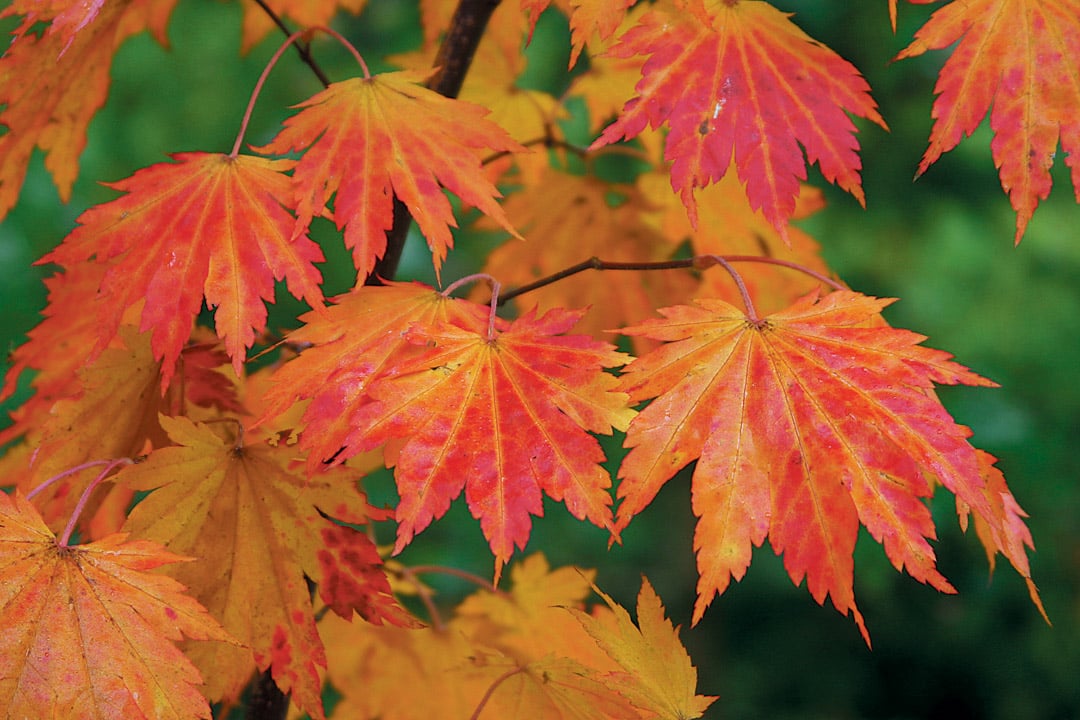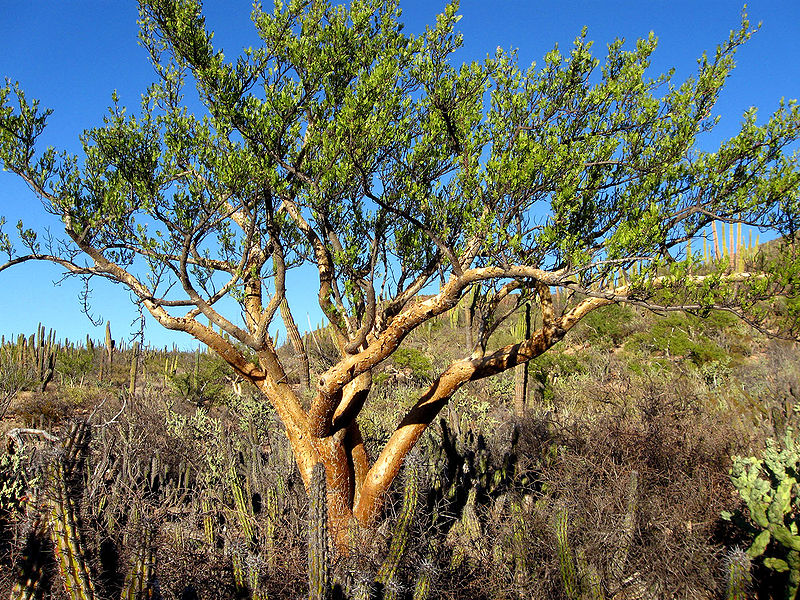

Contributor
- Topics: Archive

I’ve been passionate about trees for as long as I can remember, but I admit that many trees are unsuitable for some gardens, the choices narrowing considerably for small, urban spaces. The Great Plant Picks tree selection committee wrestles with these issues each year, considering such factors as growth rate and ultimate size, crown shape, structural durability, invasiveness, cold hardiness, allergic potential, and pest and disease resistance. On the topic of aesthetics, it’s sometimes difficult to find common ground, but committee members recognize both the importance of beauty in the landscape and the subjectivity of making such assessments. Who can say why variegated plants are attractive to some and anathema to others? Disagreements occasionally arise among members, but the committee is effective, in part, because, through its diversity of opinion, narrow prejudices are exposed and given a thorough airing.

This is not to say that more significant disagreements don’t occur—we are, after all, an opinionated bunch. In most cases, though, they are the result of members’ personal experiences with regional performance differences. For example, California stalwarts, such as canyon live oak (Quercus chrysolepis), will never make the list (despite adequate cold hardiness): such trees perform well only in warm locations, especially north of Seattle. In cool Vancouver, BC, evergreen oaks from the Southwest are exceptionally slow, and few would be described as “great” plants. Caveats pointing out specific environmental requirements are rare in the GPP program; we prefer to recommend plants with broad adaptability throughout the Pacific Northwest. Luckily, this region is a good place to grow plants, and there are plenty to choose from.

Decidous Trees
For 2007, we have selected a range of conifers, broadleaved evergreens, and deciduous trees, with something for nearly every garden situation. Among broadleaved deciduous trees, few are as striking in leaf and stature as those in the Japanese maple group. Siebold’s maple (Acer sieboldianum), native to northern Japan, is a small tree to about thirty feet (nine meters) in height, with star-shaped leaves. Like most in this group, Siebold’s maple performs beautifully in the Pacific Northwest, tolerating shade or full sun (with adequate summer moisture) and coloring exquisitely orange and red in the autumn.
This year, we recommended a pair of white-flowered magnolias: star magnolia (Magnolia stellata ‘Waterlily’) and Wilson’s magnolia (M. wilsonii). The two could not be more different. The first is a compact shrub crowded with floral starbursts of supple, strap-shaped, white tepals on naked branches in early spring. The other is a shade tolerant, broadly spreading, multi-stemmed tree with fragrant, elegant, nodding bells, sparingly produced at the ends of silken, leafy branches. As unlike as these two are, who can resist the charms of a magnolia blossom? Both are well adapted to garden culture in our region.

The list includes two mountain ashes: Sorbus ‘Joseph Rock’, a pinnate-leaved, bright yellowfruited selection; and whitebeam (S. aria ‘Lutescens’), sporting broad, undivided leaves with fuzzy, silver hairs, and orange russeted fruits. Mountain ashes make excellent suburban trees of manageable size with multi-season appeal and considerable value to wildlife. These GPP selections will grow anywhere suitable for Sorbus species in the region, but they have none of the invasive tendencies of European mountain ash (S. aucuparia) . Also a well-behaved tree, keaki or Japanese zelkova (Zelkova serrata) has shown itself to be a fine example of a sturdy, adaptable species for the Pacific Northwest. Two cultivars in particular, ‘Village Green’ with a regular, spreading habit, and ‘Green Vase’ with a pronounced upright stature, are excellent additions to the GPP stable. Likewise, maidenhair tree (Ginkgo biloba) is a near bulletproof species (having been around for 270 million years or so). The cultivar ‘Tubifolia’ has attractively inrolled leaves and a slow growth rate, making it a superb shrubby tree when grown in full sun.

Smoke tree (Cotinus obovatus) is one of three North American native, broadleaved deciduous trees in this year’s list. The more familiar Venetian smoke bush (C. coggygria) and the hybrid ‘Grace’ (C. coggyria x C. obovatus) are already Great Plant Picks. Clearly, Cotinus has excellent qualities. The American species, like its European counterpart, is drought and heat tolerant and produces billowy, smoke-like inflorescences. It is the larger of the two species and makes a striking statement as a multi-stemmed tree with its ample, rounded butterscotch green leaves that turn flaming orange in autumn.
Another eastern native, well known among landscape designers and municipal tree managers for its adaptability to difficult environments, pin oak (Quercus palustris) certainly deserves GPP recognition. Pin oak is a broadly pyramidal tree that requires ample space, so may not be suitable for residential landscapes; as a park or boulevard subject, there are few trees its equal. On a smaller scale, the Pacific Northwest native Garry or Oregon white oak (Q. garryana) develops slowly into an iconic tree, its rough, blackened bark and dark green leaves contrasting with the splotches and streaks of silver white lichen that typically adorn its trunk and sparse branches. Garry oak belongs to the white oaks (leaves with rounded lobes), a group characterized by somewhat fussier requirements than those of the black oak group (leaves with pointed lobes, as in pin oak); however, it displays a native resilience and adaptability to garden environments throughout this region.

Coniferous and Deciduous
Two more deciduous trees were selected for GPP recognition for 2007, but these are both conifers. Pond cypress (Taxodium distichum var. imbricatum ‘Nutans’) is native to swampy areas of the Deep South; despite its near subtropical provenance, it is an exceptionally adaptable tree in our climate. Taxodium species display wide environmental tolerances, and all have a distinctive appearance. ‘Nutans’ produces strongly upright stems and stringy green shoots on pendulous branches—a look that recommends it for a waterside presentation. Perhaps surprisingly, this cultivar also looks good at the edge of a lawn or as a specimen in a large container. The other deciduous conifer, a pine relative, is golden larch (Pseudolarix amabilis). This rare and beautiful species from China is a relatively slow grower, preferring some shelter to best display its soft, bright green needles (which change to startling gold in fall), but it, too, is a fine garden plant and worthy of wider planting.

Evergreens
Finally, there are three evergreens among this year’s selections, one bamboo and two conifers. Black bamboo (Phyllostachys nigra) is a familiar garden plant to many, its ebony colored culms (stems) ascending to thirty feet (ten meters) or more under ideal conditions. Although Phyllostachys species are “running” bamboos, black bamboo is among the least aggressive, its culms tending not to stray far for decades after planting. Another common evergreen Asian plant, sugi or Japanese cedar (Cryptomeria japonica) is characterized by a wonderful diversity of foliage forms. The cultivar ‘Black Dragon’ is a densely branching upright grower with typical adult (ie, needle-like) foliage, but its growth habit is decidedly compact. It makes a broadly pyramidal shrub, three to five feet tall (one to one-and-a-half meters) after ten years. Coast redwood (Sequoia sempervirens) is, clearly, at the other end of the size scale. The tallest living organism on the planet, this species is known to add nearly three feet (one meter) or more in height every year, eventually surpassing three hundred feet (one hundred meters) in its native habitat of coastal northern California and southern Oregon. Sequoia is, nevertheless, an excellent garden plant, albeit for the larger property. It seems fitting that an article in Pacific Horticulture provides me with the opportunity to personally thank that part of western North America for providing another beautiful tree for the Pacific Northwest.

The Pendleton and Elisabeth C Miller Charitable Foundation
The Great Plant Picks program is educational in nature and sponsored by the Pendleton and Elisabeth C Miller Charitable Foundation. This Seattle-based nonprofit foundation continues the work of Elisabeth Miller (1914 to 1994), an avid horticulturist, gardener, and philanthropist. The Foundation also nurtures the Miller Garden, whose staff continue to collect and test unusual plants— one of Mrs Miller’s passions. Visit www.millergarden.org for more information.

All selections in the Great Plant Picks have been chosen for their suitability in USDA hardiness zones 7 and 8, which covers most of the Pacific Northwest, west of the Cascades. Check the latest edition of the Sunset Western Garden Book for the adaptability of these plants outside the Pacific Northwest.
To learn more about the Great Plant Picks, visit www.greatplantpicks.org.
Share:
Social Media
Garden Futurist Podcast
Most Popular
Videos
Topics
Related Posts

Ground Up Science for Greener Cities with Garden Futurist Dr. Alessandro Ossola
Spring 2023 Listen to the Podcast here. Alessandro Ossola is a scientist who gets very excited about the challenge of climate change allowing for an

Readying Urban Forests for Climate Realities with Garden Futurist Dr. Greg McPherson
Winter 2023 Listen to the Podcast here. “Going from the mow and blow to a more horticulturally knowledgeable approach to maintaining the landscape. And that

Welcome, Greywater, to the Garden
Summer 2022 Oh, summer: delightful warm air, tomatoes swelling on the vine, fragrant blooms on an evening stroll. When it’s warm and rainless, how is

Big Tree-Data and Big-Tree Data with Garden Futurist Matt Ritter
Summer 2022 Listen to the full Garden Futurist: Episode XV podcast here. We are in an environmental crisis right now in many parts of California









Responses